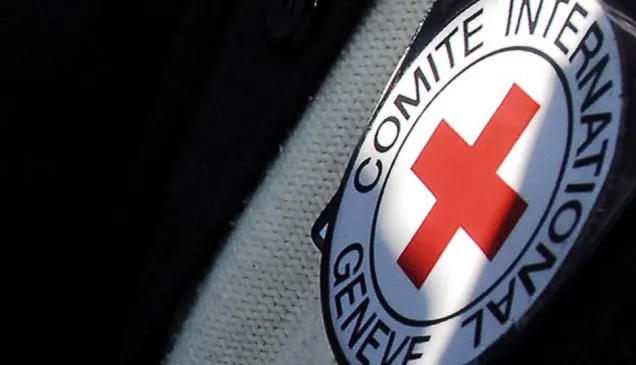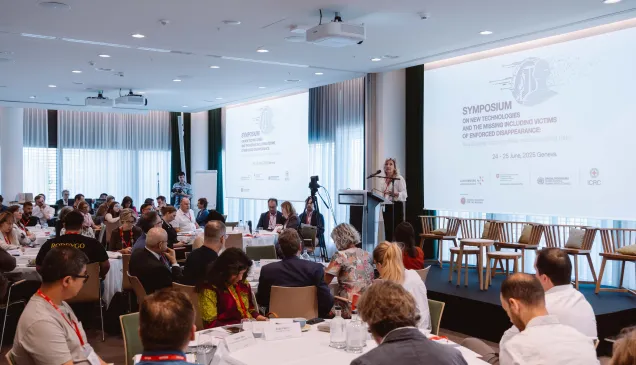Interview: How does law protect in war? A new edition of the ICRC's casebook
As part of its mandate to promote and strengthen the teaching and understanding of international humanitarian law (IHL), the ICRC has published a third, expanded and updated edition of its IHL reference book, “How Does Law Protect in War?” Authors Marco Sassòli, Antoine Bouvier and Anne Quintin tell us all about this latest version.
What is the idea behind the Casebook?
Marco Sassòli: The decision to publish the casebook was made for two reasons. First, we realized in 1997 that there was no publication on the practice of IHL. There are a few excellent academic textbooks, but none focuses on practice. Second, as part of the ICRC's dissemination policy, we needed to provide our academic contacts with an up-to-date tool for the teaching of IHL. This is how the Casebook came about. It contains all the teaching material needed to set up a practice-oriented course on IHL.
How did the readers react?
Antoine Bouvier: Reactions and feedback have been mostly positive. The Casebook has gradually become a reference, and has been fully or partly translated into Russian, Arabic, Chinese and other languages.
Can you describe the content of the casebook in a few words?
Antoine Bouvier: The most fundamental and contemporary legal issues arising in armed conflicts are presented and explained in short introductory texts. To expand their knowledge on each topic, or on a particular conflict, the readers are invited to go to our collection of around 300 case studies reflecting contemporary practice. The second part of each case, entitled Discussion, provides the reader with guidance on and questions them about the main IHL issues raised by the case. The Casebook ends with a series of course outlines for professors interested in setting up courses on IHL or introducing its study into their teaching.
So the Casebook is intended mainly for academic circles?
Anne Quintin: It was indeed originally developed specifically for university professors, to help them teach IHL. But surveys have shown that many students also use the Casebook directly, as do practitioners, judges, prosecutors and defence counsels. Actually, we think the Casebook can be used by anyone with an interest in learning more about how law applies in armed conflicts.
The case studies do not provide answers to the questions asked, so it may not always be easy for everyone to use the Casebook.
Marco Sassòli: This is true. The Discussion section is intended to provide teachers (and students) with a structure for discussing the legal issues arising in the case, to highlight controversial points and to hint at possible answers and their consequences: we do not provide answers, because in many cases, there is no right or wrong answer. The Discussion is meant to trigger a debate among students, under the supervision of a professor. However, the other parts of the book – the introductory texts and the cases on which the discussions are based – can be used independently.
Why publish a new edition of the book?
Antoine Bouvier: As we said, this is a book on contemporary practice. As such, it needs to be regularly updated in order to reflect the constant development of IHL. Unfortunately, the number of armed conflicts has not decreased in the past few years, so it was important for us to provide our readers with the most up-to-date information on contemporary wars.
What is new with this edition?
Anne Quintin: Most importantly, we have added about 60 new cases and documents, mainly on Israel and the occupied territories and on Afghanistan and Guantanamo Bay Naval Station. But we have also added case studies on other armed conflicts or situations of violence, such as Nepal, Sri Lanka and Colombia. The latest judicial developments - from the International Criminal Tribunals, the International Criminal Court, the International Court of Justice, or even the human rights treaty bodies – have also been included.
Apart from the cases and documents, many introductory texts have been updated to reflect the latest legal developments, and new texts have been added on topical issues such as the notion of direct participation in hostilities. We worked hard to improve the bibliographies, which have therefore been considerably expanded. Lastly, the selection of teaching tools has been updated to include the latest course outlines currently used by well-known university professors.
I hear there have also been some technical improvements?
Anne Quintin: One of the main criticisms that we've had since the Casebook was first published is about its weight: it's too heavy to carry around! We couldn't reduce the volume of the contents, so instead we decided to insert a CD. The CD reproduces the whole content of the book, as well as additional case studies of historical relevance and some supplementary texts on IHL. This way, users can just take the CD with them without wrecking their backs!
What’s next?
In 2012, the authors published the second French edition, in cooperation with Ms Juliane Garcia from the ICRC's Civil Society Relations Unit. It includes not only all updates from the 2011 English edition, but it also provides new cases and documents, many of which are published in French for the first time. Besides, the ICRC is developing an online adaptation, which will offer many new functions, facilitate research, and allow regular updates.



